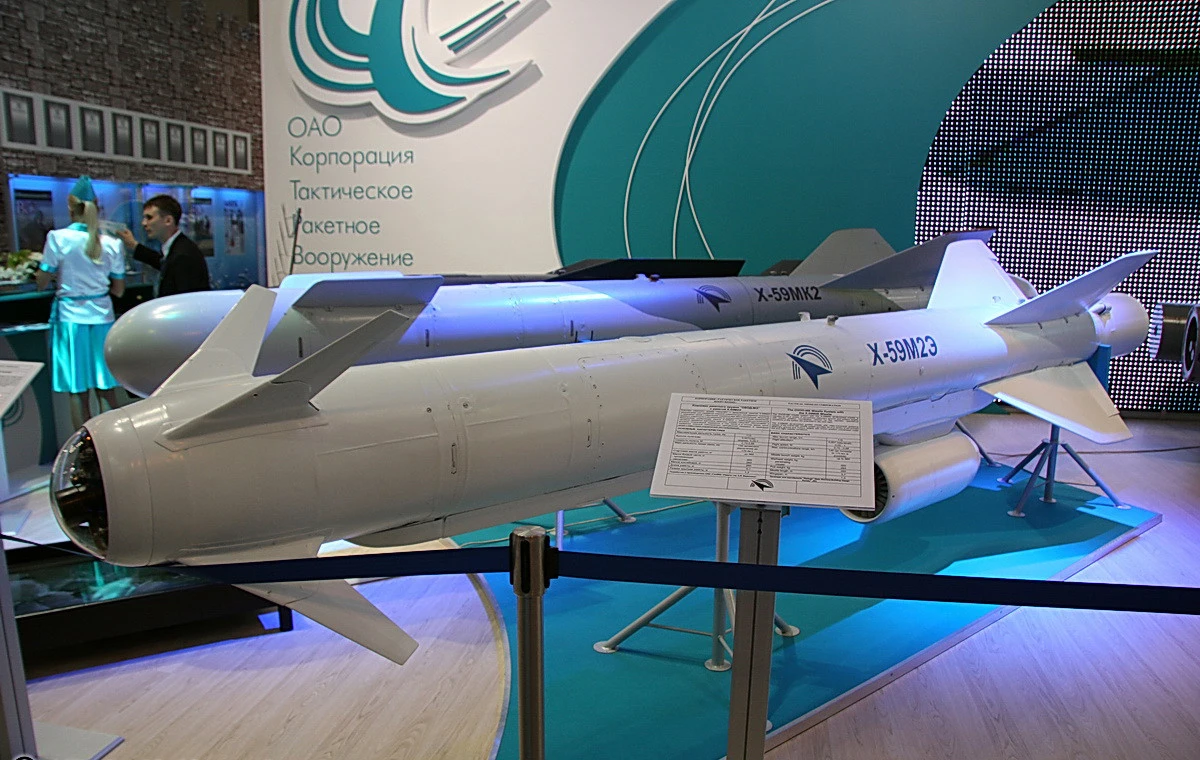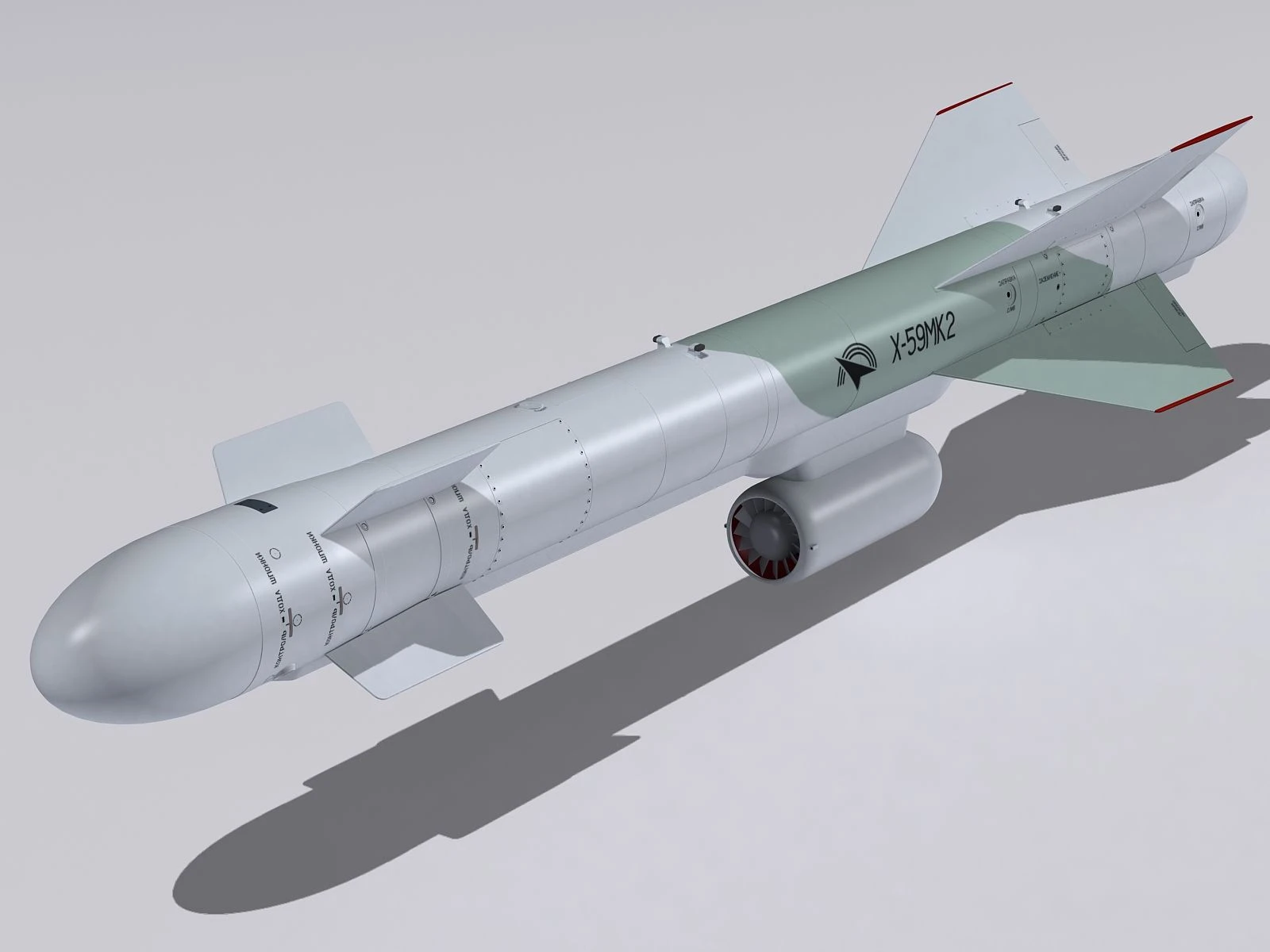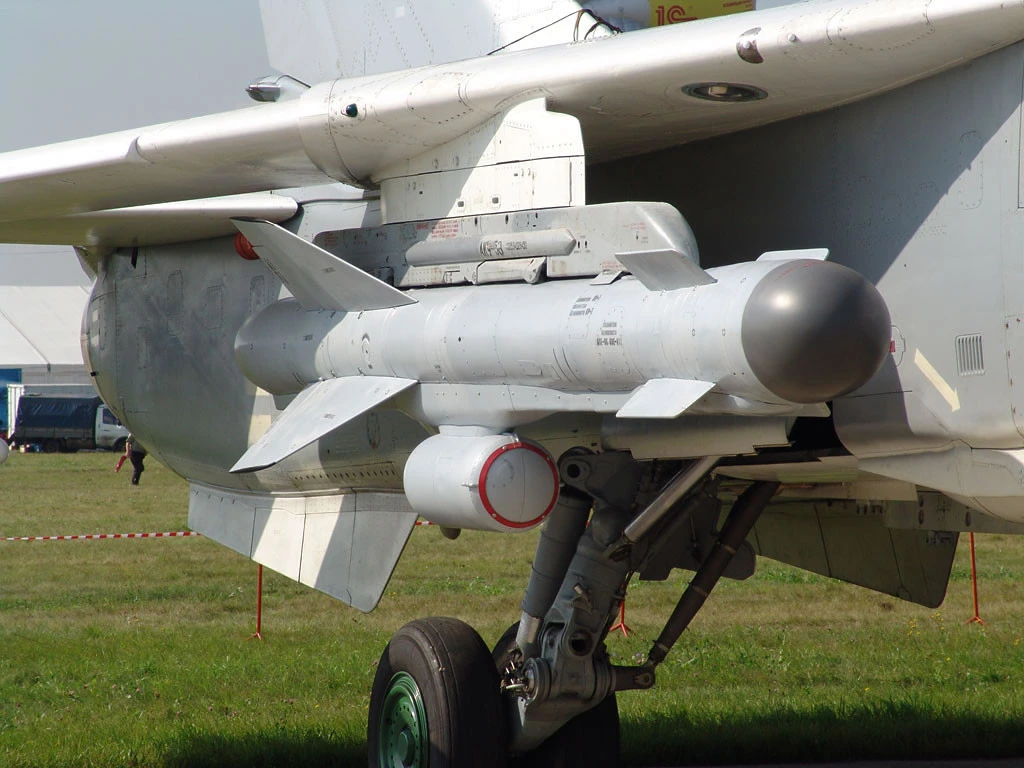
All about Kh-59 missile, which Russia uses to replace high-quality weapons during massive attacks
Over the past year, the Ukrainian Air Force’s daily reports have been full of references to attacks by Shahed drones and cruise missiles. Most often, these are Kh-59 missiles
What's in the text:
- What is Kh-59 and how they were created;
- Modernization of Kh-59 missiles;
- Technical characteristics of the Kh-59;
- Kh-59 in the Russian-Ukrainian war.
What is Kh-59 and how they were created
The Kh-59 Ovod (Russian: "овод" - a gadfly) is a Soviet and Russian subsonic precision air-to-surface missile of medium range. It is designed to destroy important enemy ground and surface targets covered by air defense. This weapon was supposed to provide high accuracy without jeopardizing enemy air defense of the carrier aircraft. The missile targets are visually detected by the operator during the day and in simple meteorological conditions.
The development of the Kh-59 guided missile was carried out by the Raduga design bureau located in the Moscow region. Missile testing was completed in 1979, and the following year a complex consisting of a Su-24M aircraft, a control container, and two Kh-59 missiles was adopted. The Ovod was also used to equip Su-17M single-seat fighter-bombers. As of today, the Kh-59 cruise missile for tactical aviation can be used by Su-24M, Su-25, Su-30, Su-34, Su-35, and Su-57. Missile carriers launch them at a speed of 600-1100 km/h.
The initial version of the missile had a launch range of 40-45 km and a warhead of about 150 kg. The missile also had restrictions on its use in adverse weather conditions, such as fog, rain, or strong winds.
The same problem remained with the modernized version with a twice as solid warhead and a range of more than 100 km. This is how the Russians used the Kh-59M missiles in the 1990s in Chechnya, trying to destroy opponents' shelters and warehouses in the mountains. The climate of the North Caucasus, however, severely limited the use of these weapons. Due to fog and low visibility, the Russians were unable to target snow-covered gorges and forested mountains. For example, in the entire month of December 1994, Chechnya had only 2 days of clear weather. As a result, after four launches, the use of Kh-59 missiles was abandoned.

Photo: from open sources
Modernization of Kh-59 missiles
Immediately after the collapse of the USSR, Russia began work on modernizing the Kh-59 missile. The new version had a longer range (115 km), a better engine, and was designated the Kh-59M.
Interestingly, the guidance system was manufactured at the Lviv-based Tekon-Electron enterprise. The image of the terrain from the missile's television camera was transmitted to the screen of the operator, who acted as a navigator, controlling the missile's flight. Having identified the target, the operator held it in the crosshairs on the screen. The circular probable deviation with this guidance was 2-5 meters.
The Kh-59M was used as the basis for the Kh-59M anti-ship missile, which was first demonstrated in 2001. It is equipped with an active homing radar warhead and has a range of 285 km.
In 2009, the Kh-59MK2 missile was introduced. It included satellite navigation, an inertial system, and an electron-optical homing head with a target and landmark recognition system.
Before the full-scale invasion, in 2021, the Russians presented another modernization of the missile, the Kh-59MKM version. The missile is equipped with a penetrating warhead and is designed to hit stationary ground targets at known coordinates. Defense Express observers called this weapon a “budget solution.”
The Kh-59MKM missile has a launch weight of 930 kg and is equipped with a turbojet engine. The flight altitude ranges from 15 m to 2000 m, and the maximum range, according to the manufacturers, is already 285 km.
Technical characteristics of Kh-59

Photo: from open sources
Most often, Russian forces in Ukraine use Kh-59MK2 missiles, and in case of shortage, older versions (Kh-59M/M2). Their characteristics are as follows:
- Length - 5.7 meters,
- Wingspan - 1.3 m,
- Diameter - 0.38 m,
- Starting weight - Kh-59M 930 kg, Kh-59MK2 up to 900 kg,
- Warhead - penetrating 320 kg, cluster 280-283 kg,
- Circular probable deviation - Kh-59M 2-3 m, Kh-59MK2 - 3-5 m,
- Speed - 900-1050 km/h,
- The minimum launch range is 10-15 km for the Kh-59M,
- Maximum launch range - Kh-59M 115 km, Kh-59MK2 285 km,
- Launch altitude - 200-5000 m (for Kh-59MK2 - up to 11000 m).
Kh-59 in the Russian-Ukrainian war
The first use of the Kh-59 in Ukraine was on April 4, 2022. At that time, the elevator of an agricultural company in the Mykolaiv region came under a missile attack, and the grain storage facility was paralyzed. Defense Express considered it significant that the Russians managed to hit only a large stationary target with these missiles, which did not have air defense cover.

Photo: from open sources
Subsequently, in the spring of 2022, Russian troops reached an average pace of 10 Kh-59 missiles launched in the direction of Ukrainians (about half of the missiles were of this type). They actively attacked the Kharkiv, Donetsk, and Luhansk regions. In addition, the Russians fired Kh-59 missiles at targets in Poltava, Kirovohrad, Mykolaiv, Dnipro, Zaporizhzhia, and the port of Odesa.
Initially, the invading Russian forces used the Kh-59MK2 most actively, considering it a cheap alternative to the expensive Kh-101 and Kh-555. However, their range of 285 km allowed them to be used only in frontline areas, preventing them from firing on the entire territory of Ukraine. However, high accuracy (3-5 meters) and a powerful warhead make these weapons quite effective. Gradually, the stock of Kh-59MK2s was exhausted and the Russian troops switched to Kh-59Ms with a range of 115 km.
Some of the targets hit by the Russians were openly surprising. For example, in August 2022, the Kh-59 missile fired from a Su-35 fighter jet hit a public restroom on the outskirts of Novovorontsovka, Kherson region. And in the spring of 2023, a monastery of the UOC of the Moscow Patriarchate was damaged.
Quite quickly, the Russian army's stockpile of about 800 missiles was exhausted. The Russians are trying to replenish their stockpile of weapons. To do this, they launched a plant in Smolensk and the Kh-59 attacks resumed. Instead, the Ukrainian Armed Forces attacked the Smolensk plant. According to the Defence Intelligence of Ukraine, a total of four strike drones were launched at the target, three of which hit the target (75%).
In 2023, the Russians switched to a new tactic, combining Kh-59 missile attacks with massive Shahed attacks. The relatively low speed (about 1000 km/h) and altitude of the missiles (50-300 m) allow these missiles to be destroyed by S-300PT/PS and Buk-M1 systems, as well as by MiG-29 and Su-27 fighters, not to mention NASAMS and Patriot.
- News














































